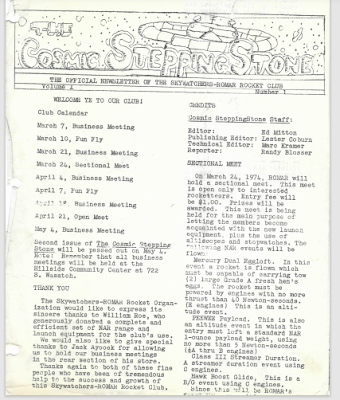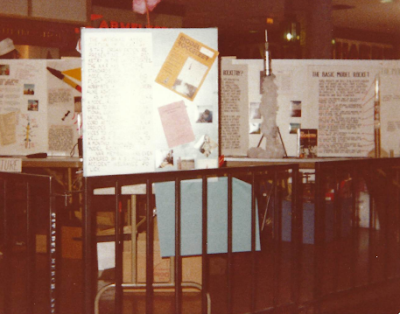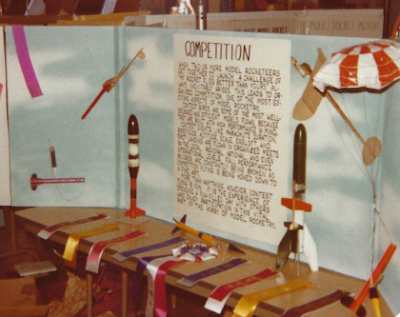Model Name: Orbital Transport
Model Type: Futuristic
Scratch build version Estes Industries kit no. K-42 / 1242. Designed by Wayne Kellner.
Motor Type: 18mm
Booster Length: 58.8cm (23.15 in.)
Booster Diameter: 24.8mm
Booster Weight: 42.5g (1.50 oz.)
Orbiter Length: 22cm (8.66 in.)
Orbiter Diameter: 18.7mm
Orbiter Wingspan: 13.2cm ( 5.2 in.)
Orbiter Weight: 15.0g (.53 oz.)
Overall Vehicle weight: 57.5g (2.03 oz.)
Color scheme: white, gray, black, and silver with red, black, and yellow trim.
Completion date: March 31, 2021
A Must-Have Model In Every Fleet
The Estes Orbital Transport is one of those iconic model rockets that every rocketeer should own. It just has 'that look' - attractive lines, proportions, and decor - that is plain irresistible. The first time I ever laid eyes on one was in 1969 at NARAM-11. The bird was proudly displayed at Estes Industries' vendor booth. I was smitten! To a thirteen year old kid, that thing was the coolest rocket ever!
I ended up building one in 1975 during my Old Fleet days.
It doesn't need to be said that an Orbital Transport is a requirement for inclusion in the new BlastFromThePast BAR fleet.
The JimZ website provided the instructions, patterns, and decal scans to make a clone build possible.
This OT build was actually a long time in realizing completion. The many fins were cut out way back in early 2018 before the project was shelved while other models were built. They were done the old school way - tracing the paper patterns onto balsa sheets and engaging in LOTS of cutting with an X-Acto knife.
No laser-cut fins to be found here....
When it came time to begin painting the model, I quickly made the determination that I would not go with the usual all-white color scheme. I just didn't want my Orbital Transport to look like every other Orbital Transport on the planet!
I arrived at a painting plan that called for the upper half of the booster fuselage to be white, with a medium gray color for the lower half. It should be noted that the gray portion was brush-painted with hobby acrylic paint. Black trim lines separate the two colors, and these extend to the edges of all fins. The protruding sections of the booster ram jet tubes are hand-painted silver.
To round things out, the booster nose was given a black tip to make it look a bit more Space Shuttle-esque.
For the Orbiter, I chose to paint the bottoms of the wings black. Again, this and the black tip on the nose give it an appearance more akin to the Space Shuttle. Lastly, the Orbiter engine nozzle was painted silver.
Overall, this was a very pleasing project to work on, not to mention being the most challenging build to date in my BAR era.

























